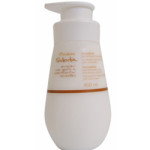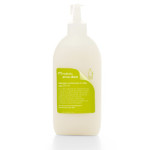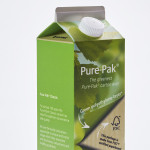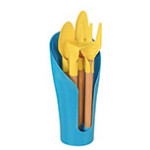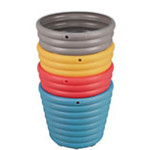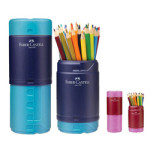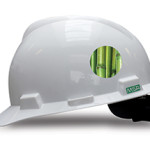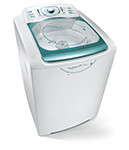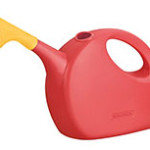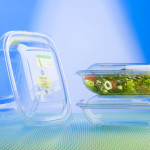Green PE/Polylactic Acid
Warringah Plastics can manufacture products from sustainably sourced materials and biodegradable materials. Firstly Polylactic Acid or PLA is well suited to packaging application as a replacement for APET, polystyrene and PVC and is made from dextrose (sugar) from corn that doesn’t require genetically modified feedstock. Corn used for plastic packaging purposes only uses 0.05% of the global corn crop. However a whole range of feedstocks can be used for the production of PLA plastic which includes wheat, sugar beets and sugar cane. With this sustainably sourced material which uses 75% less greenhouse gases and 50% less non-renewable energy Warringah Plastics can produce excellent packaging that can biodegrade. This packaging has excellent gloss, transparency and clarity, fantastic flavor and aroma barrier properties.
We also have Green PE which once again uses sugarcane and this is converted into ethanol and this is transformed into what we call Green PE. Green PE has the exact same properties as normal PE! In fact the only way to tell the difference between regular PE and Green PE is by carbon dating. Green PE is an innovative way to get a truly sustainable replacement of PE which is 100% recyclable.
Applications
PLA can be used as a substitute for APET and polystyrene so it is ideally suited to food and medical packaging but also for disposable trays and containers and even point of sale displays. Both PLA and Green PE can be clear or coloured providing there’s sufficient volume.
Colours shown above are just representations of a particular colour and aren’t necessarily the finished plastic colour. Lighting conditions, monitor calibration and variances in the plastic colour processing can impact the colour of a given material. For more information on colour availability please contact us.
|
Thickness
|
Ava.
|
Thickness
|
Ava.
|
Thickness
|
Ava.
|
|---|---|---|---|---|---|
|
0.5MM
|
 |
4.5MM
|
 |
18MM
|
|
|
1MM
|
 |
6MM
|
20MM
|
||
|
1.5MM
|
 |
8MM
|
25MM
|
||
|
2MM
|
 |
10MM
|
30MM
|
||
|
3MM
|
 |
12MM
|
40MM
|
||
|
4MM
|
 |
15MM
|
Please note that different materials have varying tolerances when it comes to thickness. A product should facilitate material variances +-0.2mm
|
Property
|
Value
|
Unit
|
|---|---|---|
|
Mechanical
|
||
|
Tensile Strength
|
53
|
MPa
|
|
Flexural Strength
|
35
|
MPa
|
|
Shear Strength
|
60
|
MPa
|
|
Impact Strength
|
16
|
J/m
|
|
Hardness
|
M or R
|
|
|
Thermal
|
||
|
Working Temperature
|
45
|
°C
|
|
Vacuum Forming Temperature
|
180
|
°C
|
|
Thermal Expansion
|
10^-5/°C
|
|
|
Vicat Softening Temperature
|
107
|
°C
|
|
Miscellaneous
|
||
|
Specific Gravity
|
1.24
|
g/cm³
|
|
Water Absorption
|
% in 24 hr
|
|
|
Light Transmission
|
%
|
|
|
Dielectric Strength
|
Volts/Mil
|
|
|
Surface Energy
|
Dynes/cm
|
|
The information in the above data table is provided for educational purposes only in good faith and should only be used as a guide. As sheet material comes in a wide variety of grades, colours, textures and can contain different chemical properties, the figures only represent a typical insight into the specifications of the material. Information has been collated from a variety of sources. For more information on these figures and other properties please contact us.


